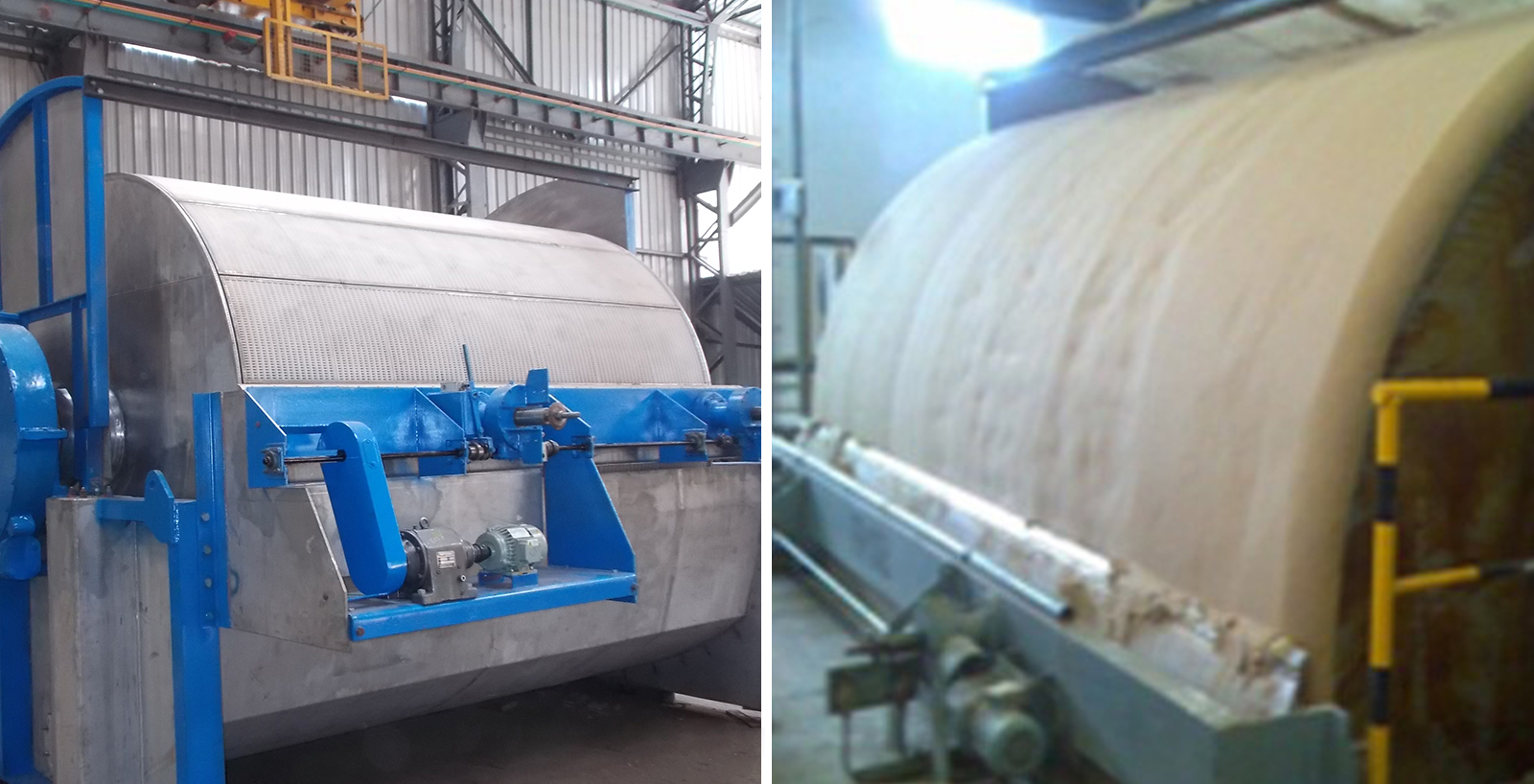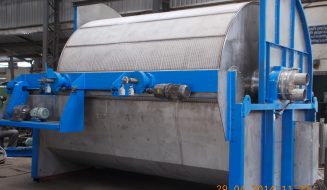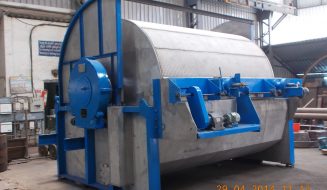Precoat Filter
ROTARY VACUUM PRECOAT FILTERS
PRE COAT DISCHARGE

The EIMCO-K.C.P. Pre-coat drum filters are coated with a bed of diatomaceous earth or similar material. During cycling a clear filtrate is obtained. When vacuum is applied, the liquid is drawn through the pre-coat material, and solids deposited on the pre-coat surface are removed along with a thin portion of the pre-coat by an advancing scraper blade, as the drum revolves.
The blade operates independently of the drive to provide a “precision lathe: movement. Depending on the movement of the blade the drum can operate up to a week without retracting the blade to apply a new pre-coat bed.
Pre-coat filters are recommended when small amounts of solids are to be removed from large volumes of liquids, for clarification or polishing of effluent, or for the filtration of material that produces sticky solids.
They provide a high clarity of filtrate when the filtrate is the valuable product and the cake is to be discarded.
The following materials are used to form the Precoat bed:
- Diatomaceous Earth (or Diatomite) consisting of siliceous skeletal remains of tiny aquatic unicellular plants.
- Perlite consisting of glassy crushed and heat-expanded rock from volcanic origin.
- Cellulose consisting of fibrous light weight and ash less paper like medium.
- Special ground wood is becoming popular in recent years since it is combustible and reduces the high cost of disposal. There are nowadays manufacturers that grind, wash and classify special timber to permeabilities which can suit a wide range of applications.
The Precoat Filter is similar in appearance to a conventional Drum Filter but its construction is very different:
The scraper blade on conventional drum filters is stationary and serves mainly to deflect the cake while it is back-blown at the point of discharge. The scraper on a Precoat filter, which is also called “Doctor Blade”, moves slowly towards the drum and shaves-off the blinding layer of the contaminants together with a thin layer of the precoating material. This movement exposes continuously a fresh layer of the Precoat surface so that when the drum submerges into the tank it is ready to polish the solution. The blade movement mechanism is equipped with a precision drive having an adjustable advance rate of 2-10 mm/hr. The selected rate is determined by the penetration of fines into the Precoat bed which, in turn, depends on the permeability of the filter aid. Once the entire Precoat is consumed the blade retracts at a fast rate so that the filter is ready for a new precoating cycle.
The cake discharges on conventional drum filters by blow-back hence a section of the main valve’s bridge setting is allocated for this purpose. On Precoat filters the entire drum deck is subjected to vacuum therefore there are two design options:
A conventional valve that is piped, including its blow-back section, to be open to vacuum during polishing. When the Precoat is consumed its blow-back section is turned on to remove the remaining Precoat heel over the doctor blade.
- A valve less design in which there is no bridge setting and the sealing between the rotating drum and the stationary outlet is by circumferential “o” rings rather than by a face seal used on conventional valves.
- The clearance between the drum deck and the agitator on conventional drum filters is sufficient to accommodate cakes of up to about 50 mm while on modern Precoat filters higher clearances to allow the formation of 150 mm Precoat are quite common.





